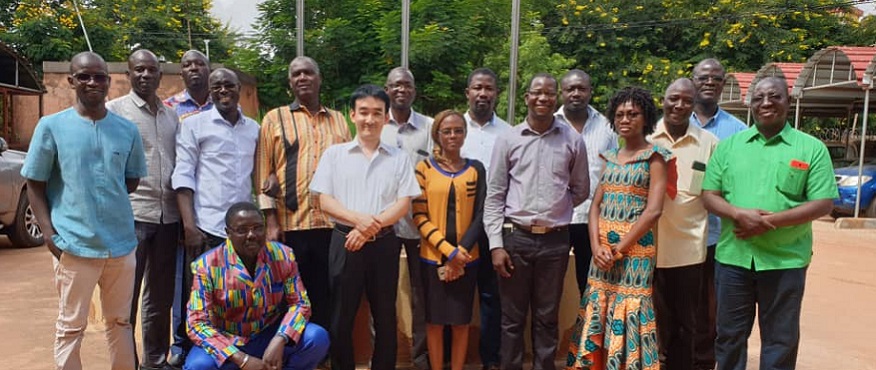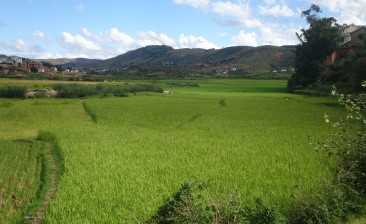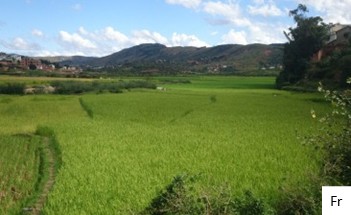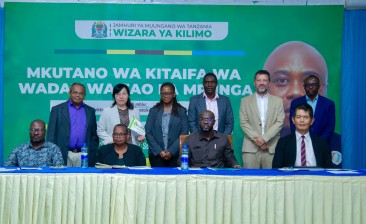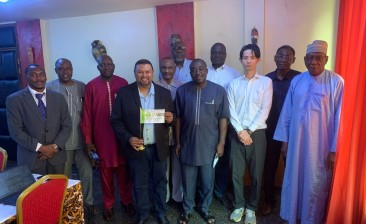Burkina Faso, September 2019
4th Working Week on NRDS Revision in Burkina Faso
In Burkina Faso, cereals are the staple food of the population. Of the cereals, rice ranks 4th in terms of area cultivated and production. Although production has recently increased on an average by 11% per year, only 30% of domestic rice demand is covered by the local production. Given the strategic importance of rice, it was decided to develop a strategy to enable the country to achieve self-sufficiency in rice production. After developing a first draft of NRDS II, the Burkinabe authorities have decided to accelerate the pace of paddy production from 350,000 tons to 1,000,000 tons by 2021; 2,000,000 tons by 2027; and 3,000,000 tons by 2030. At this pace of increments in domestic rice production, it shall be expected that the country will attain self-sufficiency by 2027.
Since these new targets are different from those of the first draft of the NRDS-II, it has become necessary to reassess the goals of the NRDS-II so that it aligns with the objectives of both the NRDS II draft and the new will of the Government. It is for this purpose, a CARD working week (WW) was organized in the conference room of the PRP from 16 to 20 September 2019. The specific objectives of the WW were to verify the realism of these new targets and to review the draft of the NRDS II for further validation by the stakeholders.
Chaired by the Representative of the Permanent Secretary of the Ministry of Agriculture, this workshop saw the participation of the main actors involved in the rice value chain such as: (i) the representative of the Agricultural Ministry, (ii) the representatives of some donors (GIZ, AGRA, JICA), (iii) the representatives of the Technical Departments of the Agricultural Ministry, (iv) the members of the rice Task Force and, (v) the representative of producers’ organizations.
Key Results / Outcome
The participants first agreed on the methodological approach to be followed in reviewing the document. It was decided to assess the existing and planned investments before verifying the targets of paddy production. Based on the agronomic standards and lessons learned from the implementation of NRDS I, it was agreed that good agronomic practices (GAP) should form the core of the NRDS II. The NRDS-II will also focus on the promotion of irrigated rice cultivation with special emphasis on the improvement of access to certified seeds and fertilizers. Moreover, to be realistic, it has been proposed to enable greater involvement of the private sector in all segments of the rice value chain.
The revised NRDS-II would be implemented in two periods from 2021 to 2025 and 2026 to 2030. During the first period, involvement of the private sector in the different segments of the rice value chain and, acceleration of the pace of paddy production will be emphasized in order to reach the targeted 1 million tons of paddy by 2021 and 1.6 million tons by 2025.
During the second period (2026 to 2030), the achievements of the first period will be consolidated in order to attain self-sufficiency by 2027 (with a production of 2 million tons of paddy) and generate a surplus of production by 2030 (with production of 3 million tons). To achieve this, it will be necessary to develop more than 400,000 hectares of irrigation systems, of which nearly a quarter with total control of water, and make 32,000 tons of improved seeds, 64,000 tons of urea and 95,000 tons of NPK available to producers.
With an estimated total cost of about CFAF 812.21 billion, the government, donors, NGOs, local communities and the private sector will provide funding.
The implementation of the strategy will bring the following benefits in terms of economic and social development:
- An increase in the contribution of the rice sector to GDP, from 0.3% (8 billion FCFA) to 12% (500 billion FCFA);
- An improvement in the coverage rate of domestic demand for rice (from 30% in 2018 to 132% in 2030);
- An improvement in the trade balance by generating foreign exchange earnings equivalent to CFAF 400 billion;
- Increased private sector participation through the creation of nearly 2,000 new processing enterprises and the development of nearly 50,000 ha of irrigated perimeters;
- Creation of nearly 420,000 new jobs in the sector, benefiting mainly young people and women, representing nearly 20% of the total number of new applications per year.
- Improvement in the incomes of people at the base of the pyramid (women and youth) will improve access to basic social services.
- reduction of energy costs and the footprint of carbon through the modernization of processing units, the use of best practices in the promotion of renewable energy and the promotion of equipment with lower energy consumption.
Going forward, the task force members have planned to complete the NRDS II drafting process and validate the document in December 2019.
